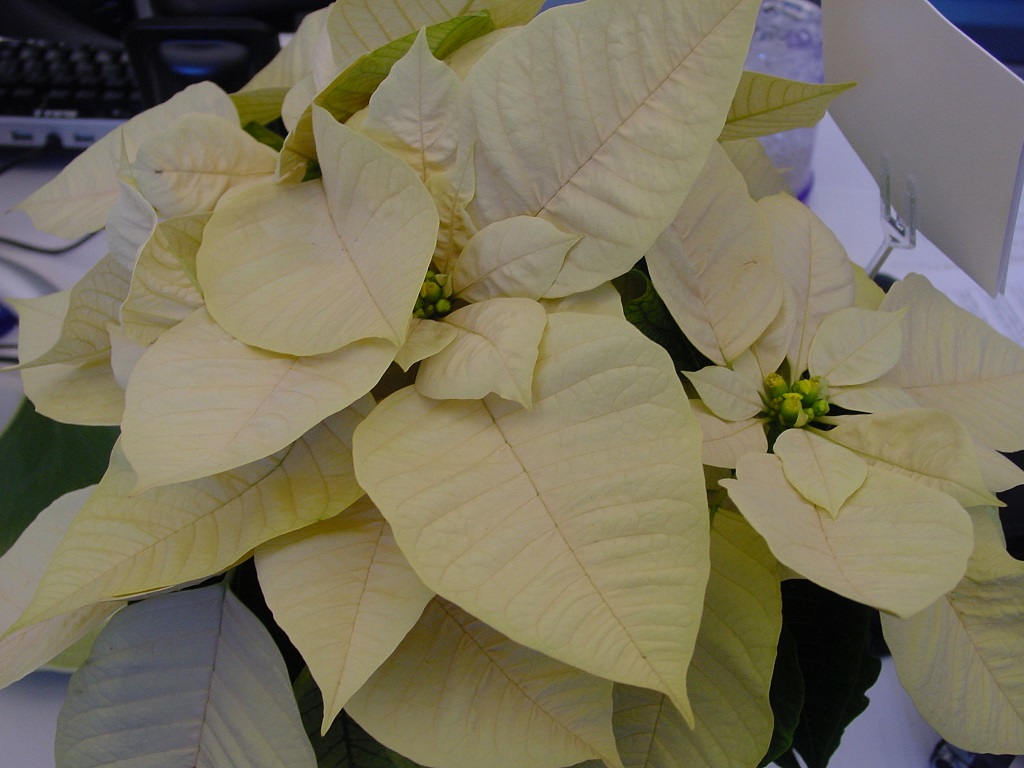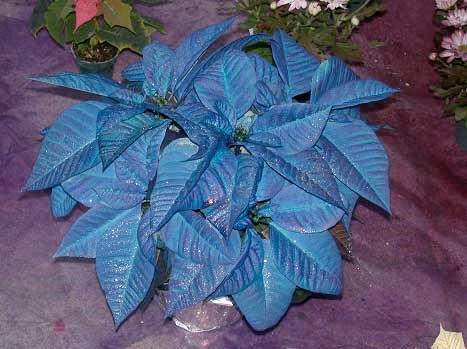Poinsettias- The Co-Star of the Holiday Season
Poinsettias are a woody shrub  native to Mexico, where they can reach heights of 10 feet. The Aztecs cultivated and regarded them as a symbol of purity. They made dyes from the bracts and used the milky white sap to counteract fevers.
native to Mexico, where they can reach heights of 10 feet. The Aztecs cultivated and regarded them as a symbol of purity. They made dyes from the bracts and used the milky white sap to counteract fevers.
Franciscan priests used the poinsettia in their nativity processions because it naturally bloomed around the holiday season. Poinsettias were introduced to the United States in 1825 by Joel Robert Poinsett who served as United States Ambassador to Mexico. He discovered the plants growing wild. Poinsett sent plants to his home greenhouses in Greenville, South Carolina and began giving plants to friends. Eventually, the plants found their way into commercial production taking on his namesake.
The poinsettia industry was pioneered and developed by the Ecke family of California. Their efforts started in the 1950s and continue today. This has led to plants that have strong branching habits, sturdy stems and long-lasting bracts with a variety of colors beyond the traditional red.
The rich color of the poinsettia is not the actual flower but instead a plant structure called bracts. The showy, colored parts of the plant, commonly called the flowers are actually modified leaves. The inconspicuous true flowers are located in the center of each whorl of bracts. They are green, have no petals and bloom with yellow flower parts and pollen.
Take care when transporting a poinsettia home. On a cold day, when temperatures dip below 40 degrees, wrap the plant and pot in paper before taking outdoors. Purchase at the end of the shopping trip to avoid chilling. A slight draft can cause the leaves to drop.
Upon arriving home unwrap the plant and place it in bright light away from cold or hot air drafts. Proper watering is vital to help ensure that the leaves and colorful bracts are retained. Poinsettias are grown in lightweight media that dries out quickly under warm home temperatures. Never let the plant dry out or sit in water. These conditions will cause leaf drop and an undesirable plant.
Punch holes in the bottom of the decorative wrap to allow excess water to drain. Alternatively, remove the plant from the wrap before watering. It is best to use lukewarm or room temperature water each time. Check the plant often and water as needed. There is no need to fertilize the plant through the holiday season. Contrary to popular belief, this plant is not toxic unless you eat numerous leaves. Consider it safe around children and pets.
During the holiday season plants can be placed in locations with normal room light for your décor as modern varieties have been bred to retain their colorful bracts and leaves for many weeks under low light conditions. Hot or cold drafts or improper watering are the leading causes of plant failure during the four to six weeks of the holiday decorating season.
 Red poinsettias are the tradition, but today there are shades of red, pink, white and multi-colored or marbled varieties. Poinsettias make a wonderful statement and add holiday cheer to the home.
Red poinsettias are the tradition, but today there are shades of red, pink, white and multi-colored or marbled varieties. Poinsettias make a wonderful statement and add holiday cheer to the home.
Have questions?
The Garden Hotline is staffed by trained EMG volunteers and Extension staff who will assist you with questions.
Phone: (913) 715-7050
Email: garden.help@jocogov.org